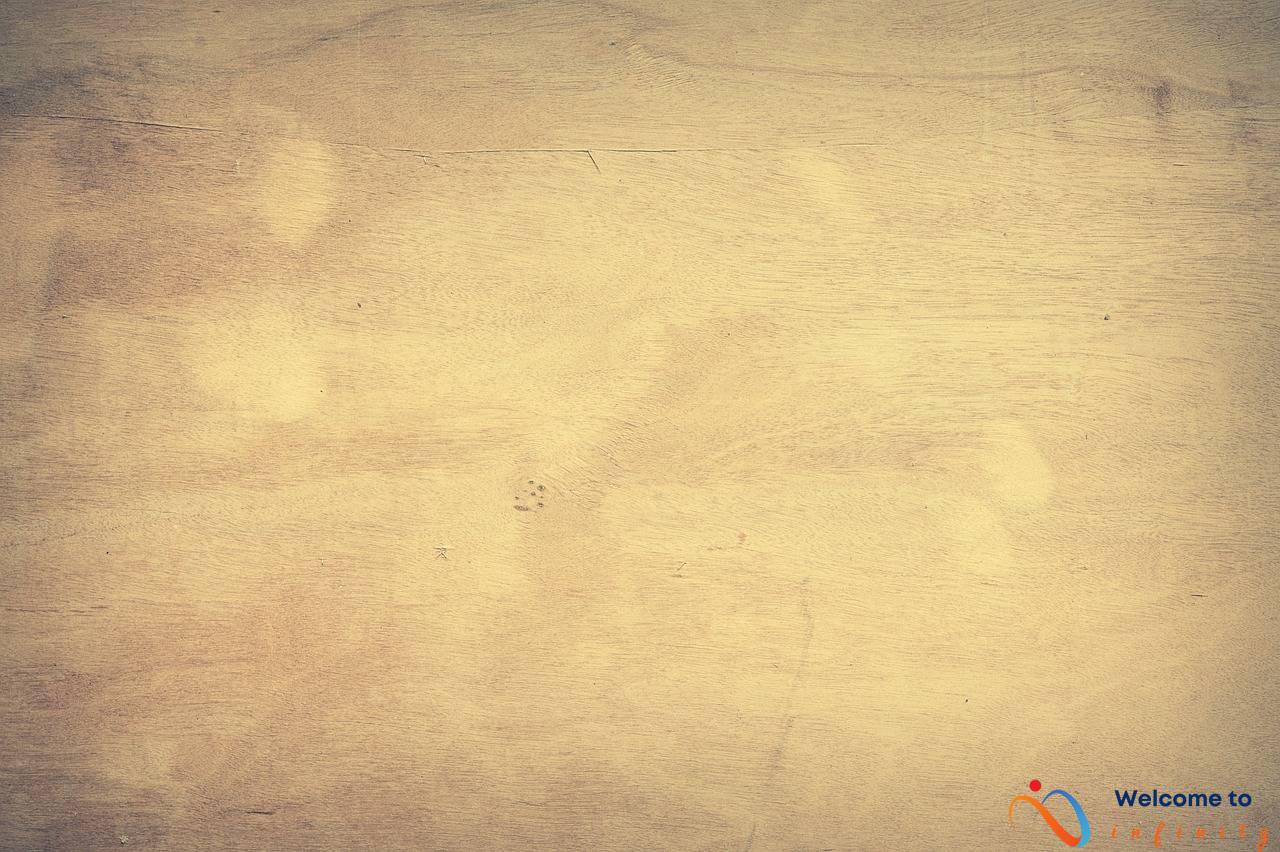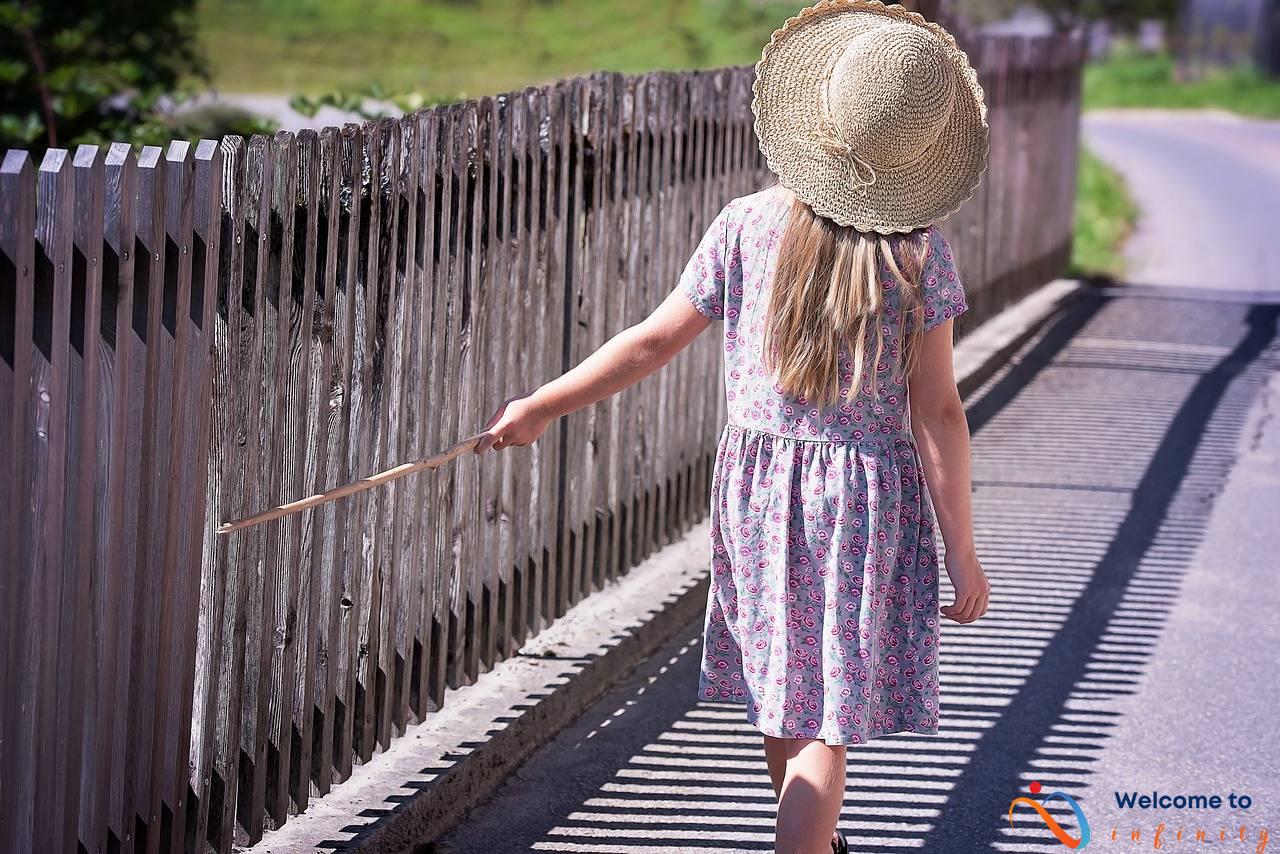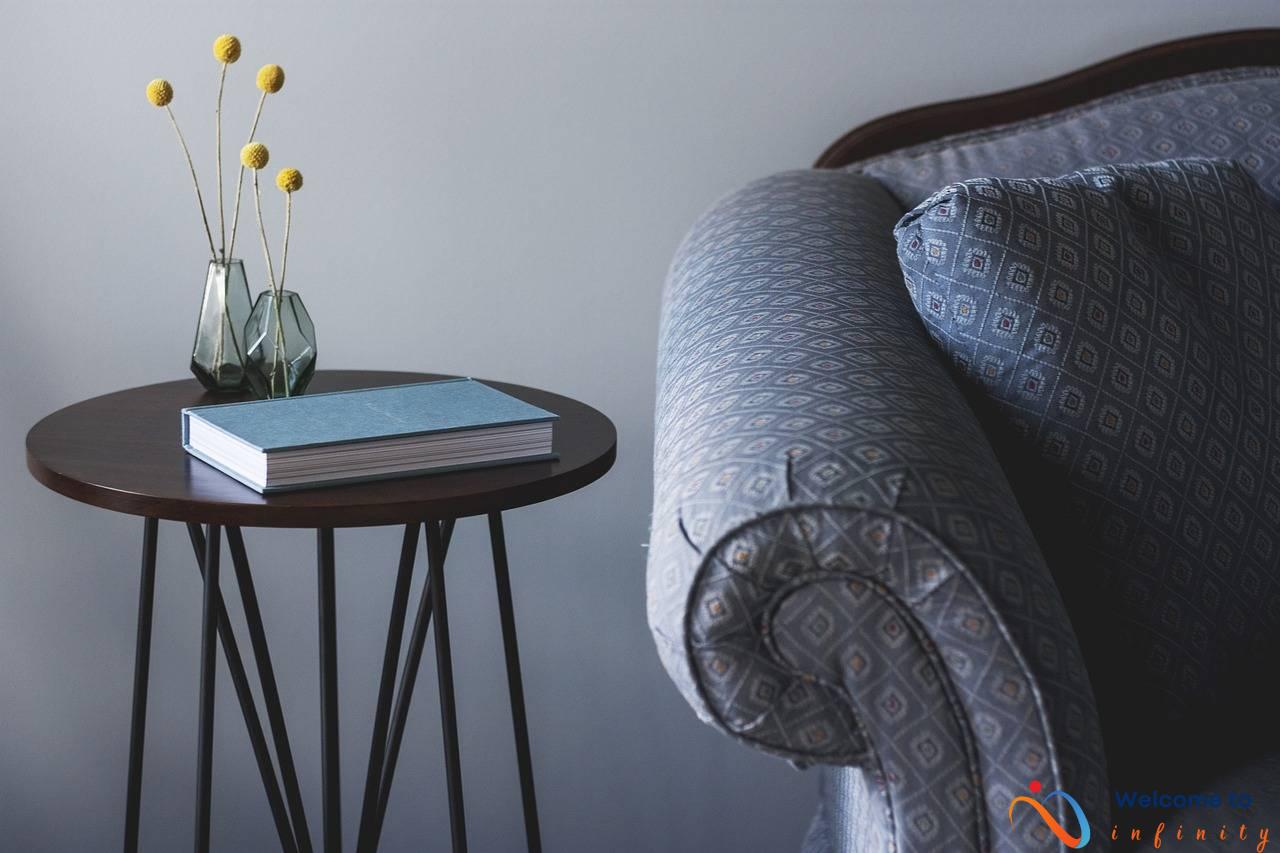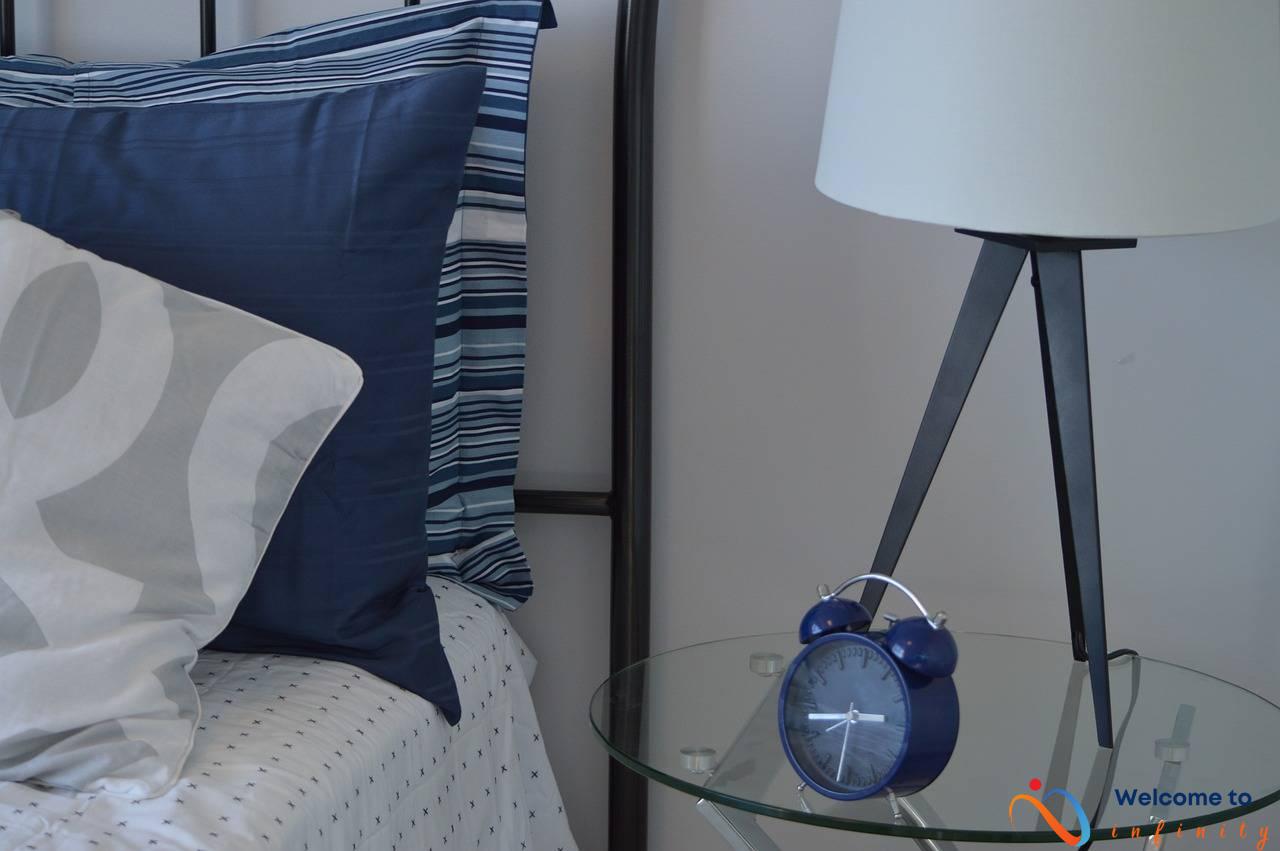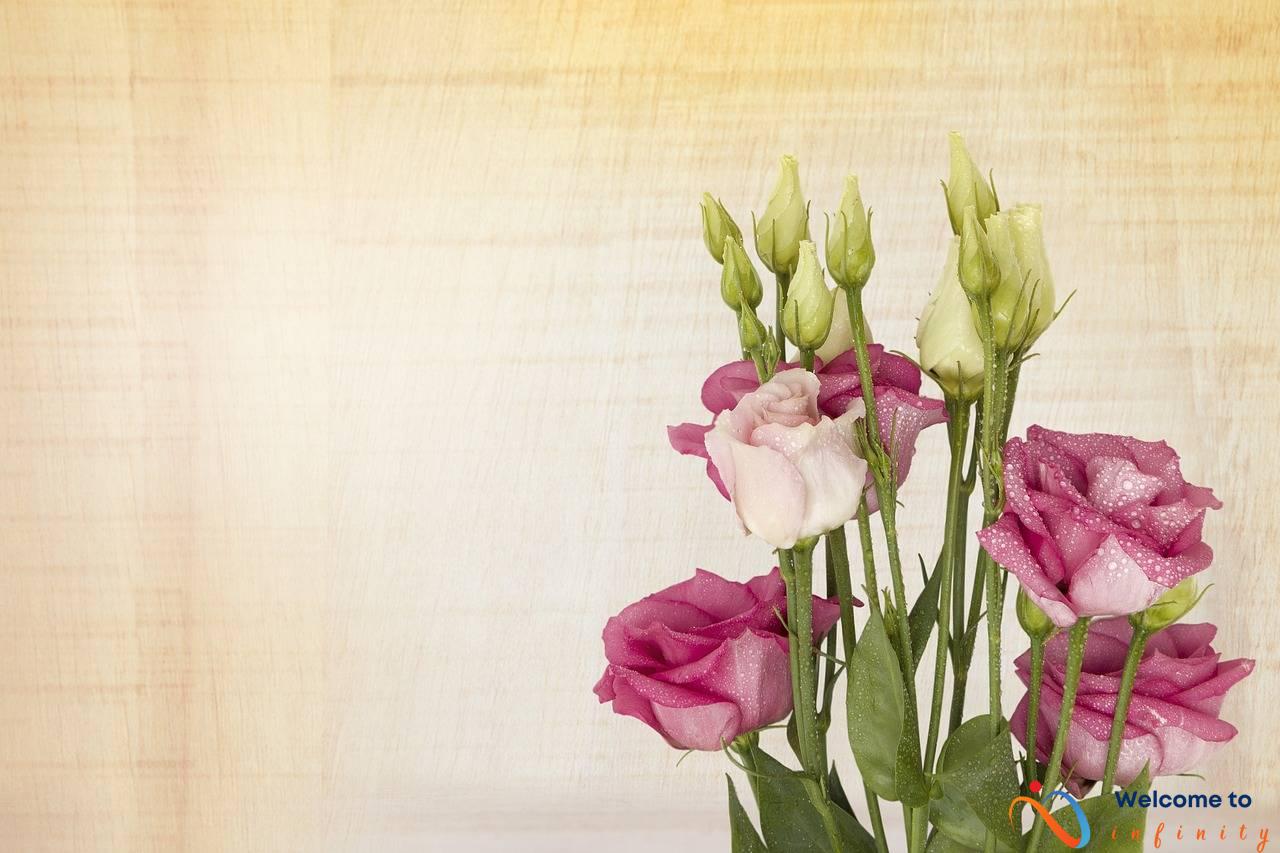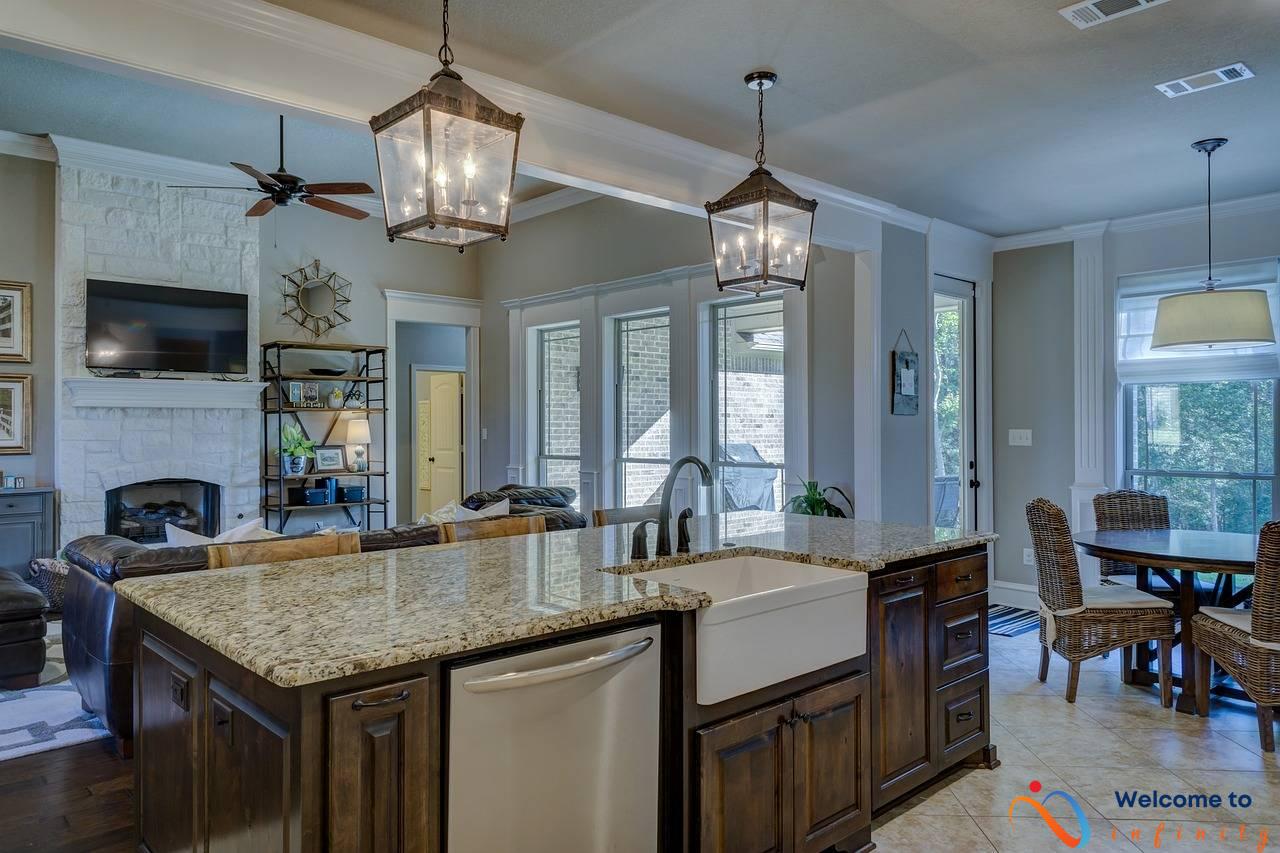If you're looking to create a cozy and inviting home, chances are you're thinking about mixing different textures and materials in your decor. A great style to try out is Scandinavian design, which emphasizes simplicity, functionality, and natural elements. Mixing textures and materials is one of the key principles of this style, and it's a great way to add visual interest and warmth to your home.
Texture is a crucial aspect of any design, and it refers to the way an object or surface feels when you touch it. In interior design, texture can come from a range of sources, from natural materials like wood and stone to textiles like wool and linen. The key is to use a variety of textures in your space, as this creates depth and dimension.
In Scandinavian design, minimalism is often combined with warmth and coziness. This might seem like a contradiction, but it's possible to create a space that's clean and uncluttered while still feeling welcoming and inviting. One way to achieve this is by using natural materials like wood and stone to add warmth and texture to a space. These materials can be used in everything from flooring to furniture to decor.
When it comes to textiles, layering is key to achieving a cozy and inviting atmosphere. This means using a variety of different textures and materials in your soft furnishings, such as throw pillows, blankets, and rugs. Wool and linen are particularly popular materials in Scandinavian design, as they add texture and warmth while still looking clean and simple.
If you're looking to incorporate texture into your home, there are many ways to do so in different rooms. In the living room, for example, you might mix a plush wool rug with a sleek leather sofa and woven throw pillows. In the bedroom, textured bedding and curtains can create a cozy and comfortable space. And in the kitchen and dining area, natural materials like wood and stone can add warmth and texture to an otherwise utilitarian space.
The Importance of Texture
Texture is a crucial element in interior design that can add depth and interest to a space. By incorporating different textures, you can instantly transform a room from feeling flat and uninviting to cozy and welcoming. Texture refers to the visual and tactile qualities of surfaces and materials in a space. This can range from rough to smooth, matte to shiny, and soft to hard.
Addition of textural elements such as woven blankets, patterned pillows, and textured rugs can create a sense of depth and warmth in a living room. Similarly, in a bedroom, layering different textures like velvet throw pillows, cozy blankets, and a plush rug can create a welcoming and comfortable environment.
Textures can also be introduced through the use of different materials in a space. Mixing wood and stone can create a balance of warmth and earthiness, while incorporating metallic accents can bring a touch of glamour. Natural materials, such as rattan and woven grasses can create a sense of organic texture in a space.
One way to incorporate texture is to mix and match different materials. For example, a combination of wooden beams, woven baskets, and plush cushions can create a rustic yet cozy look in a living room. Alternatively, in a modern space, a combination of sleek metal accents and plush textiles can create an interesting contrast while maintaining a sophisticated look.
Another way to add texture is through the use of pattern. Incorporating patterned textiles like floral prints, geometric shapes, or bold stripes can create visual interest and break up monotonous surfaces. Additionally, wallpaper with a textured print can add depth and warmth to a room.
By incorporating different textures, you can create a visually interesting space that is both cozy and welcoming. Texture is a powerful tool that can transform a space, and by introducing it in various ways, you can easily enhance the look and feel of your home.
Scandinavian Style
Scandinavian design is known for its simplicity, functionality, and clean lines. The core principle of this design style is to create a serene and balanced environment using neutral and natural elements.
The color palette is often muted and consists of whites, blacks, and grays, as well as soft pastel shades. Scandinavian interiors use a minimal amount of decorative accents and focus on keeping the space clutter-free.
To add depth and texture to a Scandinavian interior, natural materials such as wood, stone, and leather are frequently incorporated. These materials bring warmth to the space and create a sense of harmony with the surrounding environment.
In addition to natural elements, lighting plays a vital role in Scandinavian design. Natural light is maximized to bring brightness and warmth to the room. Artificial lighting is kept simple, with minimal fixtures that are functional and aesthetic.
Overall, Scandinavian design is a combination of functionality, minimalism, and comfort. It is a timeless style that can be achieved by incorporating natural elements, focusing on simplicity, and creating a warm and inviting atmosphere.
Minimalism with Warmth
When it comes to Scandinavian design, minimalism and warmth go hand in hand. The Scandinavian style is known for its simple yet stylish approach, using clean lines and a neutral color palette. Despite the minimalism, spaces are designed to feel warm and inviting. This unique balance creates a welcoming atmosphere that feels cozy and comfortable.
One of the ways to achieve minimalism with warmth is through the use of natural materials. Scandinavian interiors often incorporate wood, stone, and other natural elements, bringing a sense of warmth and texture to a space. In addition to using natural materials, incorporating soft lighting and warm textiles can add to the cozy feel.
Another way to balance minimalism and warmth is through the use of contrasting colors and textures. For example, pairing a smooth white surface with a rough wood texture can create visual interest and add warmth to a space. Simple decorative accents, such as a textured throw or a knitted pillow, can also add to the cozy feel of a room while still maintaining the minimalist aesthetic.
Overall, the unique balance of minimalism and warmth in Scandinavian design is what makes it so inviting and welcoming. By incorporating natural elements and contrasting textures, you can easily achieve a cozy and comfortable atmosphere in your own home, while still maintaining the simplicity and elegance of Scandinavian design.
Natural Materials
When it comes to Scandinavian home decor, natural materials are an important element in creating a warm and inviting atmosphere. Natural materials such as wood, stone, wool, and linen are commonly used in Scandinavian design for their texture, warmth, and visual interest.
One of the highlights of using natural materials in Scandinavian design is the incorporation of wood and stone. These materials are often used in conjunction with each other to create contrast and interest in a space. For example, a stone fireplace might be paired with wooden floors to create a cozy and warm living room.
Wool and linen are also popular natural materials in Scandinavian design. These materials add texture and warmth to a space, making it feel more inviting and cozy. A wool area rug or linen curtains can soften the look of a room and add a touch of luxury.
Layering textiles is another way to incorporate natural materials into a space. By layering different textures and materials, such as a wool throw over a linen sofa, you can create a warm and inviting atmosphere in any room.
In addition to these materials, plants and natural fibers such as rattan and jute are also commonly used in Scandinavian design. A plant or two can add a pop of color and life to a room while also improving air quality. Natural fiber rugs or baskets can be used to accessorize and add texture to a space.
Overall, using natural materials in Scandinavian home decor is an easy way to create a welcoming atmosphere in your home. From wood and stone to wool and linen, incorporating these materials will add texture and warmth to any space.
Wood and Stone
Wood and stone are two essential natural elements used to create a cozy and welcoming atmosphere in Scandinavian interiors. These classic materials bring a sense of warmth and texture to a space while adding contrast and visual interest. The combination of wood and stone creates a unique balance that helps to create an inviting atmosphere in the interior.
Incorporating wood and stone into a space will add texture and character to the design. Wood, in particular, is commonly used in Scandinavian interiors, and it is often left untreated to allow the natural grain and texture to shine through. Scandinavian interiors make use of wooden floors, wooden ceilings, wooden walls, and wooden furniture pieces. The use of wood can transform a space and give it a natural, warm, and cozy feel.
On the other hand, the use of stone in Scandinavian interiors creates a sense of naturalness and adds an industrial element to a space. The stone can be used in walls, fireplaces, floors, or through decorative accent pieces. The stone's rough texture can contrast nicely with smooth wooden finishes, and the gray and earthy tones of the stone can lend a calming and natural feel to a room's interior.
When combining wood and stone, it is essential to strike the right balance to avoid creating a heavy or dark look. One way to balance the two materials is by using lighter colored wood with darker stone or vice versa. Another way to achieve balance is by incorporating complementary materials such as wool or linen to add warmth and softness to the interior design. Sometimes, the use of neutral colors can help achieve harmony when combining natural materials like wood and stone.
In conclusion, the use of natural materials like wood and stone is a fundamental element in Scandinavian interiors' design. These materials bring warmth, texture, and contrast to a space while creating a cozy and inviting atmosphere. The combination of these materials creates a unique, natural, and soothing feel that is perfect for a home's interior.
Wool and Linen
Wool and linen are two popular natural materials used in Scandinavian home decor to add texture and warmth to a space. Wool rugs, blankets, and pillows can add cozy texture to a room, while linen curtains and bedding can bring a light and breezy feel.
When layering textures in a room, consider pairing wool and linen together. For example, a wool rug can be layered over a natural linen floor cushion, or a linen throw can be draped over a wool sofa. The contrast between the two materials creates interest and depth in a space.
In addition to adding texture, wool and linen are also ideal materials for creating a color scheme. Wool comes in a variety of natural shades, such as cream, gray, and brown, while linen offers a light and airy feel in white or soft pastels.
When choosing wool and linen pieces for your home, look for high-quality materials that will last for years to come. Wool should be soft and thick, while linen should have a crisp texture and be free from wrinkles.
Incorporating wool and linen into your Scandinavian home decor is easy and can instantly add warmth and texture to any space. Whether you choose to layer a wool rug over a natural linen mat or add a linen throw to your wool armchair, combining these natural materials is sure to create a cozy and inviting atmosphere.
Layering Textiles
Layering textiles is an essential aspect of creating a warm and inviting atmosphere in a Scandinavian home. This design principle involves combining different textures and materials to add depth and interest to a space.
Start by selecting a neutral color palette that includes shades of white, gray, and beige. Then, layer different textiles such as wool, linen, and cotton. A cozy knitted throw or a soft sheepskin rug can be added to a minimalist sofa to create a comfortable seating area. Similarly, textured pillows and blankets can be used to add warmth and personality to a bedroom.
When layering textiles, it's important to consider the weight, texture, and pattern of each material. For instance, a wool rug can be paired with a linen throw, while a chunky knit blanket can complement a sleek leather armchair.
In addition to adding texture to upholstery and bedding, curtains and drapes can also play a significant role in layering textiles. Opt for light and airy muslin or linen curtains to soften the natural light in your home. If you prefer a darker ambiance, consider layering curtains over solid blinds to create a cozy cocooning atmosphere.
To complete the look, you can add finishing touches such as woven baskets, rope accents, and other handmade decor items. These subtle details can add warmth and a sense of craftsmanship to your home, making it feel more personal and inviting.
Overall, layering textiles is an easy and effective way to create a cozy and welcoming atmosphere in a Scandinavian home. By combining different textures and materials, you can add interest, dimension, and warmth to any room in your home.
Incorporating Texture in Different Rooms
When it comes to creating a cozy and welcoming home, texture is a key element that should not be overlooked. Whether you are aiming for a Scandinavian-inspired space or not, adding texture can create a visual interest and dimension in any room. Here are some ideas on how to incorporate texture in different rooms of your home:
The living room is typically the central space in a home, and it's important to create a cozy and inviting atmosphere here. Consider layering different textures, such as a plush wool rug on a sleek wooden floor or a chunky knit throw on a smooth leather sofa. You can also mix and match different fabrics, like a velvet armchair paired with a linen sofa. Don't forget to include some natural materials, like a live edge coffee table or a woven basket for storage.
The bedroom is your personal sanctuary, and adding texture can make it feel more comfortable and relaxing. Start with the bedding – mix and match different materials, like a linen duvet cover with a chunky knit throw. Add some texture to the walls with a woven wall hanging or a macrame plant hanger. A shaggy rug underfoot will add warmth and texture to the room, while a wooden side table can add a natural element to the space.
The kitchen and dining area may not be the first place that comes to mind when you think of adding texture, but it can make a big impact on the overall feel of the space. Include natural materials, like a wooden dining table or a stone countertop. Consider using woven placemats or a textured tablecloth to add some visual interest to the table setting. You can even use texture in unexpected ways in the kitchen – for example, a copper backsplash can add a metallic sheen and texture to the space.
Remember, adding texture doesn't have to be complicated or expensive. Look for ways to mix and match different materials and use natural elements to create a cozy and welcoming atmosphere in your home.
The Living Room
The living room is often the hub of the home where family and guests gather to relax and socialize. Therefore, it's essential to create a cozy and welcoming atmosphere. One way to achieve this is by incorporating different textures in the space.
Start by choosing a neutral color palette for the walls and larger pieces of furniture, such as the sofa and chairs. This provides a clean canvas to layer textures and materials on. Add warmth to the room by layering a plush rug on the floor. Choose a rug with a high pile or shag for added softness and texture.
Next, mix and match different fabric materials for accent pillows and throws. Incorporate linen, wool, and faux fur for added interest. Use patterned fabrics for added texture or keep it simple with solid colors. Don't be afraid to mix and match different patterns and textures, just be sure to keep a cohesive color scheme.
For an eye-catching focal point, add an accent wall with textured wallpaper or a gallery wall with different textures and finishes. Incorporate natural materials like wood, stone, or even bricks for added depth and texture. Be sure to balance the textures with sleek and minimalist pieces to avoid the room feeling cluttered.
Finally, add in different lighting sources to play up the textures in the room. Use warm and soft light bulbs for a cozy and welcoming feel. Add a table lamp with a textured shade or a pendant light with a unique texture.
A mix of different textures creates a warm and inviting environment. By layering different fabrics, natural materials, and lighting, your living room can become a cozy and welcoming haven for all to enjoy.
The Bedroom
The bedroom is a sanctuary where you can unwind and relax after a long day. It's essential to create a cozy and inviting atmosphere in this space. One way to achieve this is by incorporating textured bedding and decor.
Start with the bedding. Layering textures with different materials such as cotton, linen, wool, and silk can add warmth and dimension to your bed. Mix and match textures and patterns, but stick to a muted color palette to create a cohesive look. A chunky knit throw or a faux-fur blanket can add a luxurious touch.
Accessorize with textured decor such as a woven rug, a rattan chair, or a carved wooden mirror. These elements bring in natural textures that make the space feel warm and inviting.
You can also add some personality to your bedroom by incorporating artwork or a gallery wall. Mix different textures and sizes of frames for a playful and eclectic look. A hanging macrame plant holder or a wired geometric lamp can add some visual interest to the space.
When it comes to lighting, avoid harsh overhead lights and opt for warm and ambient lighting instead. Use table lamps, floor lamps, or even string lights to create a cozy atmosphere. Don't forget to add some scented candles or a diffuser to complete the cozy vibe.
- Incorporate different textures such as cotton, linen, wool, and silk for your bedding
- Add textured decor such as a woven rug or a rattan chair
- Mix and match artwork and frames for a personal touch
- Use warm and ambient lighting instead of harsh overhead lights
- Add scented candles or a diffuser for a relaxing atmosphere
With these tips, you can create a comfortable and inviting bedroom that's perfect for rest and relaxation.
The Kitchen and Dining Area
The kitchen and dining area are the heart of any home, and it's important to create a space that is both functional and inviting. In Scandinavian design, natural materials and textures are used to create a warm and welcoming atmosphere, making it the perfect style to incorporate into your kitchen and dining area.
Start by choosing natural materials for your cabinets and countertops. Wooden cabinets, particularly those with a light finish, work well in creating a cozy and warm atmosphere. For your countertops, consider using stone or granite to add texture and visual interest.
When it comes to choosing the right textures for your kitchen and dining area, wool and linen are great options. Use wool rugs in the dining area to add warmth, and linen tablecloths or napkins to create a relaxed yet sophisticated look.
In addition to natural materials, consider adding texture to your kitchen and dining area through lighting. Lamps with woven shades or textured glass add an interesting dimension to the room, making it feel cozy and welcoming.
Lastly, don't forget about the small details. Decorative accessories made from natural materials, such as wooden bowls or stone vases, add interest to your kitchen and dining area. Use a simple yet stylish centerpiece made up of fresh flowers or branches to complete the look.
By incorporating natural materials and textures into your kitchen and dining area, you'll create a warm and welcoming space that is perfect for gathering with family and friends.

